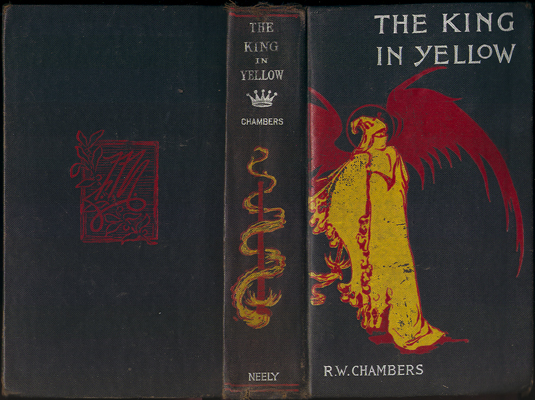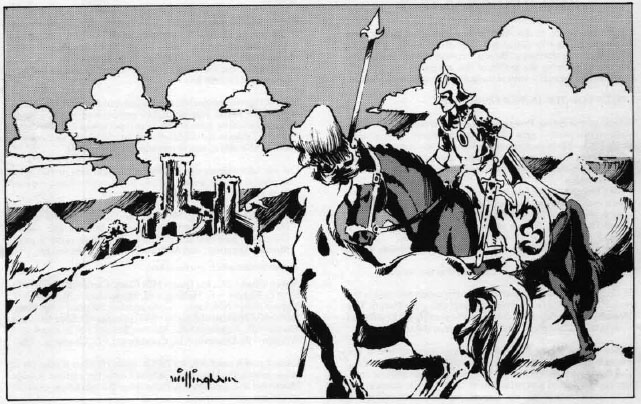"The Mask" is introduced by an excerpt from Act 1, Scene 2d:
It is also stated, in "The Repairer of Reputations", that the final moment of the first act involves the character of Cassilda on the streets, screaming in a horrified fashion, "Not upon us, oh, king! Not upon us!"
From 'The King in Yellow' a book of short stories
by the American writer Robert W. Chambers
Its been a full year or so since I cracked my copy of R.W. Chambers 'The King In Yellow' & its significance to some of my Original Dungeons & Dragons campaign notes. Chambers work of course crosses over with my recent Appendix N Oz & Wonderland notes. But Chambers was/is a whole cloth New England writer & one of the most successful authors of his era. Recently I cracked open some of my other Chambers books especially the later 'In Search of the Unknown and Police!!!'
Chambers crosses over back & forth into the realms of dreams in my mind as well as the realms of adventure in the OSR. Coupled with H.P.Lovecraft's Dreamlands cycle or Edgar Allan Poe. There's something very uncanny about the dream cycles that are easily translatable into campaign material or the world of the Fey in my mind.
This brings me to B3 'Palace of the Silver Princess' both versions of the Jean Wells & Tom Moldvay module. If want to know the real history behind the famous module go right over here. 
But what strikes me is the cursed kingdom as a mini dream world or demi plane caught within its curse. B3 has elements of the film 'Legend' from '85. Lost time, curses of biblical proportions, monsters with agendas, and all kinds of weirdness from the Eighties. B3 came out in '81 & was almost but not quite what Dave Arneson had envisioned for a megadungeon. 
There's something that I love about the pre Lovecraftian writers fiction that resonates with me so hard. The weird & deadly seems just a bit more non pedestrian because HP Lovecraft has in my opinion become a bit too well known?! Or has he? I often find that people who claim to have read Lovecraft have read some piece of fiction that's Lovecraftian not something like 'The Nameless City' or some of the dream cycle. The problem is today its too much work to actually read a bit. So among certain circles of D&D players Lovecraft's writings are even still to this day unknown.

Was Lovecraft a racist?! Certainly he was! But he did get better but really what Lovecraft was a full on xenophobe. The dictionary definiation of a Xenophobe is;"a person who fears or hates foreigners, people from different cultures, or strangers." Lovecraft hated & feared the strange, the different, & the foreign. Some of his tales had especially harsh takes towards Italian immigrants 'The Horror At Red Hook' comes to mind here. And to a certain extent 'The Haunter of the Dark' a good part of the story reflects both the feeling of the Roman Catholics in the story & Italians of the area. 'The Haunter of the Dark' is a sequel to "The Shambler from the Stars", by Robert Bloch. Bloch wrote a third story in the sequence, "The Shadow from the Steeple", in 1950.
Illustration of rioters breaking into Parish Prison. Anti-Italian lynching in New Orleans, 1891
But then you have stories like 'The Cats of Ulthar';
"It is said that in Ulthar, which lies beyond the river Skai, no man may kill a cat; and this I can verily believe as I gaze upon him who sitteth purring before the fire. For the cat is cryptic, and close to strange things which men cannot see. He is the soul of antique Aegyptus, and bearer of tales from forgotten cities in Meroe and Ophir. He is the kin of the jungle’s lords, and heir to the secrets of hoary and sinister Africa. The Sphinx is his cousin, and he speaks her language; but he is more ancient than the Sphinx, and remembers that which she hath forgotten"
And as an animal lover especially a New England cat lover I'm more then happy to forgive Lovecraft's mental issues & attitudes because I spoke Robert Bloch at length about his friend. The real question is what the Hell was the Starry Wisdom cult up too?! They were trying to summon Nyarlathotep in his aspect as the Haunter of the Dark. 
But the follow up stories by Bloch implied that there was a lot more going on behind the scenes in Providence with the Church of Starry Wisdom. Are there multiple cults operating around the world at the same time during the 1850's through 1900's?! Yes I believe so!
Jack London's The Red One chronicles another such alien entity from outside our known space time. The Red One has many characteristics of Lovecraft's Great Old Ones especially the nihilistic elements & themes of the novel.
There's indications that like a great onion there are multitudes of reality both mundane & completely weird from our local space time continuum in these stories. This pulls from the notion that a multitude of worlds or prime material Earths may cross over when these entities are encountered by ordinary humanity. These meets are very dangerous indeed. 
But several of both Jack London's & R.W. Chamber's themes & setting elements in their stories & novels become evident & have much in common with some old school modules & dungeons:
- The theme of 'the other' & 'the alien' are evident all around them.
- Dream or nightmare like qualities that indicate multiple layers of reality all within the same fictional landscape.
- In 'The Red One' 'The story's theme was suggested to London by his friend George Sterling: a message is sent from an alien civilization but is lost in the wilderness' This throws itself in the same light as Joseph Conrad's short novel Heart of Darkness.
- The crossing over into the otherworldly or alien environment is something we find over & over again in many of the early D&D modules.
- The theme of the alien or dark 'lost world' suggests the ruin or apocalyptic from the intrusion of the 'other invasive' divinity or alien god.
- Dungeons or ruins are the realm of the deadly & suicidal something inimical to mankind on a fundamental level.
- The theme of the alien as horror becomes evident. This indicates not a prejudiced based basis but one based on survival of the human.
- Treasure is only a byproduct of the adventure but not its basis. There is evil but its so alien that it might not be recognized as the cosmic threat it represents.
- The old themes of colonization give way to the themes of the completely invasive life form. Mankind's days are numbered.
- These alien divinities that exist within these stories point up the existence to a multitude of higher dimensional life forms that can take on entire themes of campaigns.
No comments:
Post a Comment
Note: Only a member of this blog may post a comment.